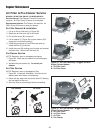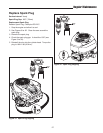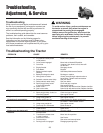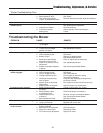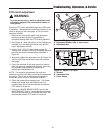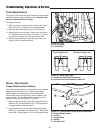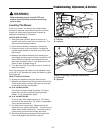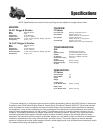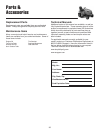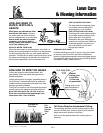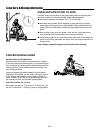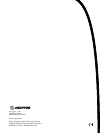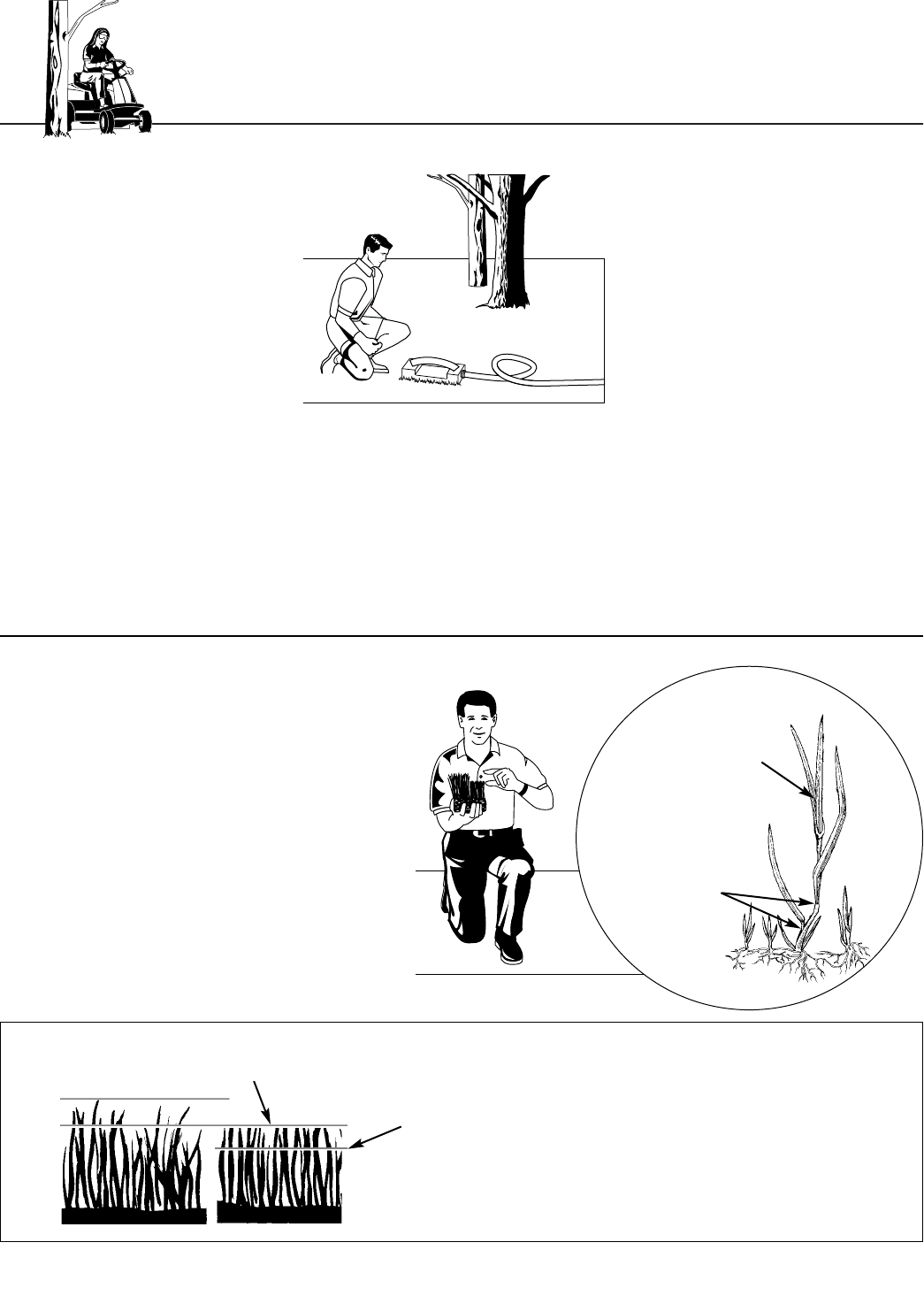
Lawn Care
& Mowing Information
LC-1
HOW AND WHEN TO
WATER, FERTILIZE &
AERATE
Most lawns are watered too often,
but with too little water. However
too much water can allow develop-
ment of diseases with your lawn. It is
best to water the lawn only when
necessary, and then to water it
slowly, evenly, and deeply—imitat-
ing a slow, soaking rain.
WHEN TO WATER YOUR LAWN
When the lawn begins to wilt, the grass’s color dulls, or
footprints stay compressed for more than a few seconds,
the lawn is beginning to dry out, and needs additional
moisture. The best time to water is early morning to allow
the water to soak deeply into the lawn and reduce the
amount that evaporates in the hot afternoon sun.
HOW TO WATER YOUR LAWN
The best method of watering a lawn
is to imitate a slow, soaking rain,
applying about 1 inch of water.
HOW TO FERTILIZE YOUR LAWN
Fertilizing with a slow-release fertiliz-
er provides missing nutrients which
help create slow, even growth.
Remember that over-fertilizing can
cause harm, and that most fertilizing
should be applied in the spring so
that it will release into the lawn
through the summer.
AERATING YOUR LAWN
Consider aerating your lawn in spring. Using an aerator
to remove cores of soil from the lawn increases the
speed of clipping decomposition and encourages deeper
root growth by opening up the soil and permitting greater
movement of water, fertilizer and air.
TP 600-2136-03-UV-SMA
HOW HIGH TO MOW THE GRASS
Cutting the grass too short causes weak, thin
grass plants, which are easily damaged by dry
periods and pests.
Letting grass grow a bit longer—especially when it
is hot and dry—reduces heat build-up, preserves
needed moisture and protects the grass from heat
damage and other problems.
Cutting off too much at one time shocks the plant’s
growth system and weakens the grass plants. A
good rule of thumb is the 1/3 rule: to cut no
more than one third of the grass height, and
never more than 1 inch at a time.
Cut
Here On
Second
Pass
Cut Here On
First Pass
Optimal
cutting point
at less than
1/3 from top
of grass blade
Tall Grass Requires Incremental Cutting
For extremely tall grass, set the cutting height at maxi-
mum for the first pass, and then reset it to the desired
height and mow a second or third time.
Don’t cover the grass surface with a heavy layer of
clippings.
Cutting down to this
area contributes to
thatch problems
Cut less than
1/3




